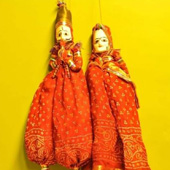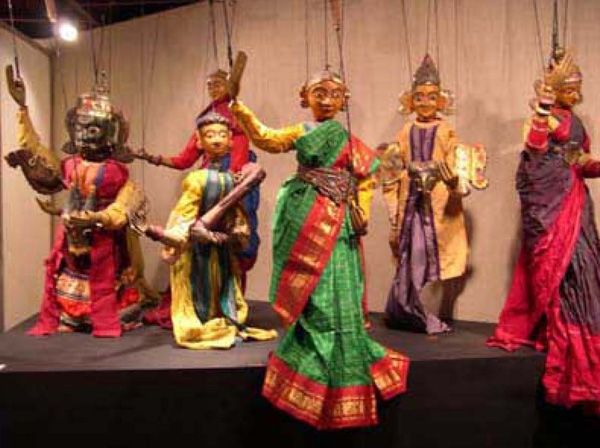“Traditional string puppet theatre of Karnataka in south-west India. String puppets have different names in Karnataka depending on the region. In the southern part of Mysore, they are called sutrada gombeyata (sutra: string, gombeyata: dance), whereas the term yakshagana (chant of celestial beings) is used in the northern style, yakshagana gombeyata. They present little difference in terms of costumes, make-up, repertory themes, performance structure and music. Sutrada gombeyata puppets are one metre high and weigh between 6 and 8 kilograms. They are carved by sculptors from light rot-resistant wood. Unlike yakshagana gombeyata puppets, which have legs and are articulated at the knees and ankles, sutrada gombeyata puppets are legless with long dresses floating under their upper torso. The puppeteers make each puppet play multiple roles and transform them during the performance. Their round faces painted in blue, red, and yellow can change into a hero or a demon, a hunter, or a forest hermit. The stage, whose dimensions vary depending on the region, is usually set up outside the temple of Kali. The visible part measures about 180 centimeters by 120 centimeters with a depth of 75 centimeters. The rest of the stage is covered by dark cloth in order to hide the puppeteers. Each puppet, suspended by six black strings (two tied to the ears, two to the hands, and two to the hips), is handled by the puppeteer who directs its movements with his two hands as he talks and sings”.


